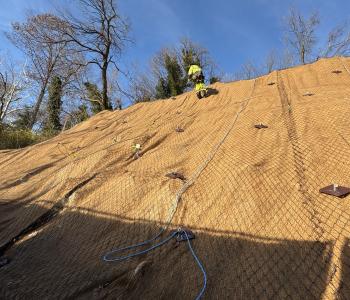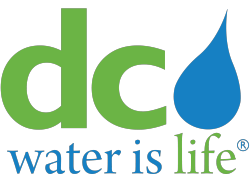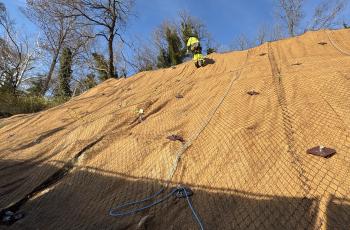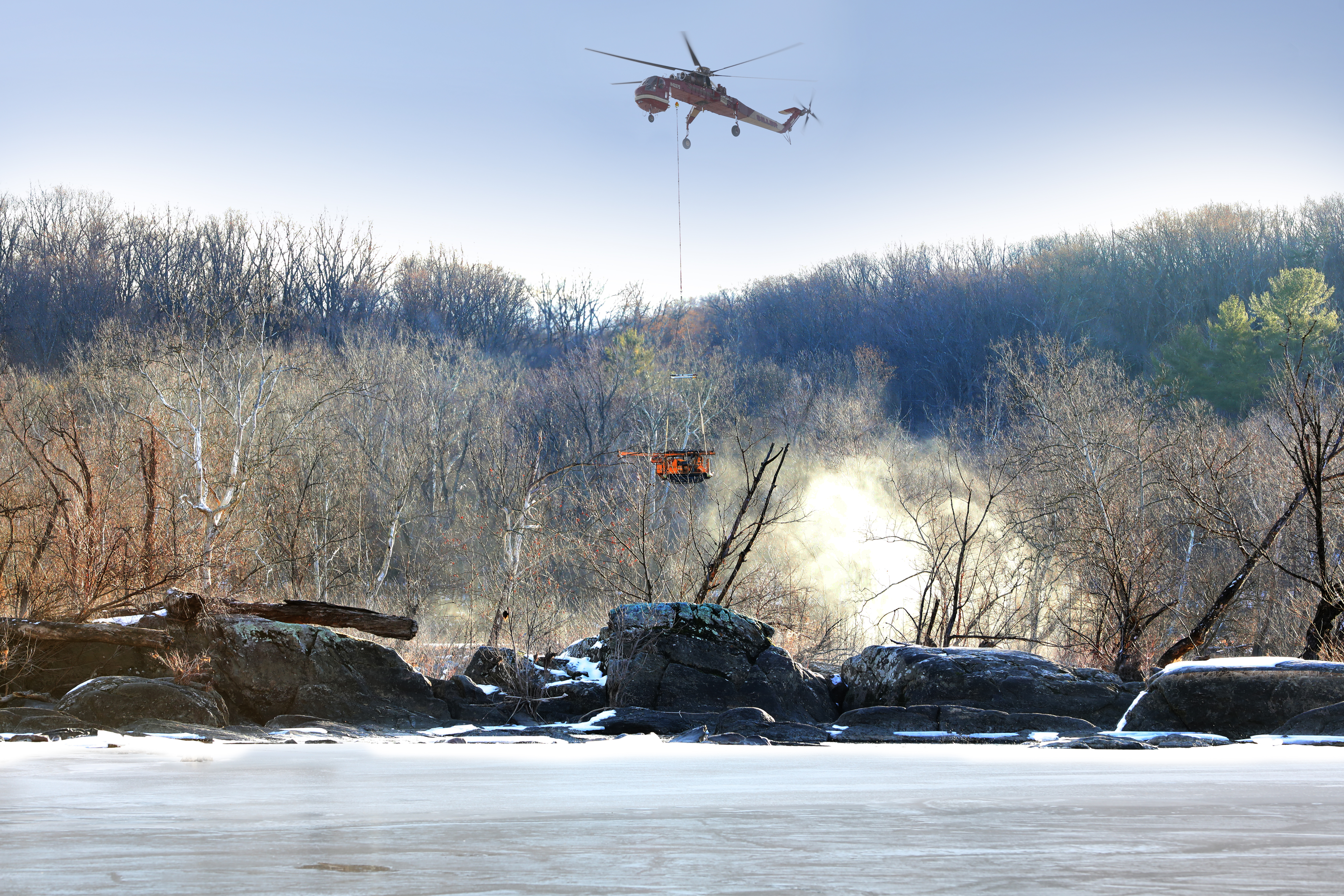New Section of Capital Crescent Trail Opens, Potomac River Tunnel Construction moves to next phase
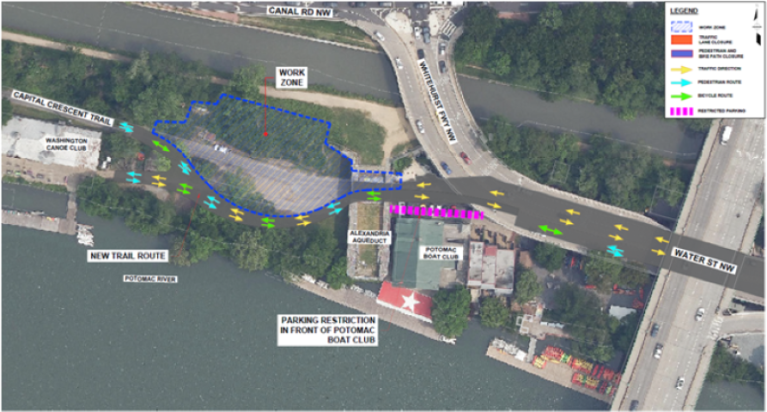
The new trail route south of the work zone is a shared path for pedestrians, bicyclists, and motorists visiting the Washington Canoe Club.
CONSTRUCTION ACTIVITY NOTIFICATION - DC CLEAN RIVERS - POTOMAC RIVER TUNNEL PROJECT
DC Water has opened the new portion of the Capital Crescent Trail in Georgetown, serving as a detour around the Potomac River Tunnel Project construction site, west of the aqueduct. The next phase of work involves stabilizing the ground within the site in preparation for upcoming construction activities.
Capital Crescent Trail and Water Street Northwest
- The new trail detours users and visitors of the Washington Canoe Club south, around the construction site.
- The trail is a shared path for bicyclists, pedestrians, and motorists heading to and from the Washington Canoe Club.
- Under the aqueduct, one lane is for trail users and Washington Canoe Club visitors, and another for accessing the construction site.
- Parking restrictions will remain in place on the south side of Water Street Northwest in front of the Potomac Boat Club.
Ground Stabilization Work
In July, DC Water will begin work to stabilize the ground before excavating for the deep drop shaft and other underground structures within the construction site. The contractor will use a large drill for deep foundation work. Workers will lower a steel cage into each deep hole formed by the drill and then pour in the concrete. The concrete columns (secant piles) will form a retaining wall to prevent soil from collapsing and ground water from infiltrating the hole during excavation. We will distribute a notice in July announcing the start date for this work.
Noise may be noticeable during drilling operations. Construction noise is monitored to ensure it does not exceed the District's standard limits.
What to Expect
- Date: Starting in July 2025, weather permitting
- Time: Monday–Friday from 7:00 a.m. to 7:00 p.m.
- Ground stabilization work will be performed within the limits of the construction site.
- Construction activities, including drilling and muck removal, may generate noticeable noise during work hours.
- DC Water is committed to minimizing disruption and will monitor noise levels to ensure compliance with District regulations.
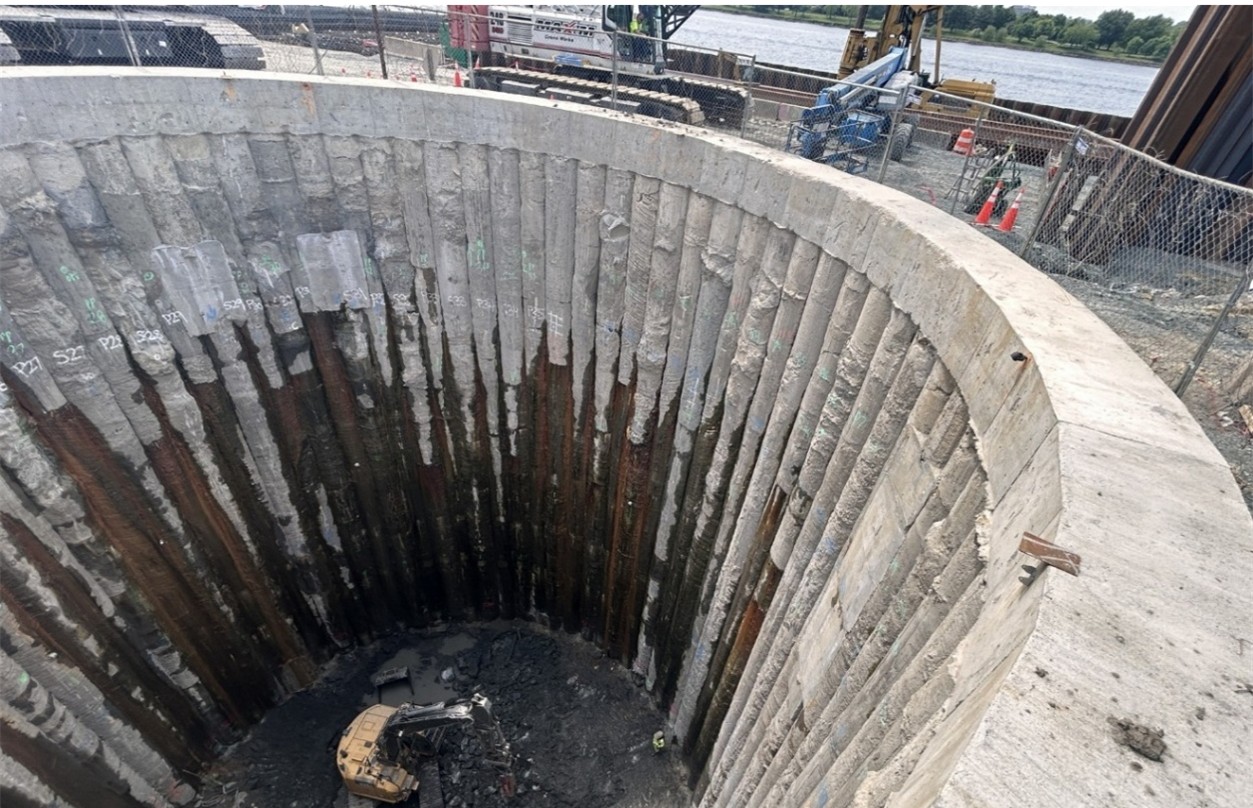
A view of the concrete columns forming a retaining wall for one of the two mining shafts at the West Potomac Park construction site. Similar columns will be installed adjacent to the Capital Crescent Trail.
Additional Construction Activities Starting in June 2025
- Installing a swing gate under the aqueduct. Only motorists visiting the Washington Canoe Club with a key will be able to open the gate to drive through.
- Removing the sitting area near the aqueduct on Water Street Northwest. The removal is to allow space for large construction vehicles to navigate under the aqueduct. The sitting area will be restored when construction at the site is completed.
- Installing new fencing along the perimeter of the construction site.
- Removing trees and bushes on the north slope within the construction site. Replacement trees and bushes will be planted during the project restoration phase at the end of construction.
- Installing protections for DC Water’s Upper Potomac Interceptor (UPI), a four-foot diameter sewer line serving Montgomery County.
The number of service vehicles for the site will increase during this time. Every effort will be made to minimize noise and maintain safe access to the trail and surrounding areas.
We appreciate your patience. You can sign up for construction activity notices sent via email by contacting dcpotomacrivertunnel@dcwater.com.
Project Details
The Potomac River Tunnel is the next major phase of DC Water’s Clean Rivers Project. The 5.5-mile tunnel system, including diversion facilities, drop shafts, and support structures, will capture a mixture of sewage and stormwater and divert it to the Blue Plains Advanced Wastewater Treatment Plant. Each year about 650 million gallons of untreated sewer overflows enter the Potomac River, and ultimately, Chesapeake Bay, releasing trash and increasing bacteria levels harmful to aquatic life.
The tunnel will reduce this volume by 93% and reduce the frequency of events from 74 to four in a year of average rainfall, ensuring compliance with a 2005 Federal Consent Decree entered by DC Water, the District of Columbia, the US Environmental Protection Agency, and the US Department of Justice, as amended in January 2016.
Capital Crescent Trail Site
At the Capital Crescent Trail construction site west of the Potomac (Alexandria) Aqueduct Ruins, DC Water is constructing an underground diversion facility to connect to the existing sewer system and redirect excess wastewater and stormwater to the Potomac River Tunnel.


